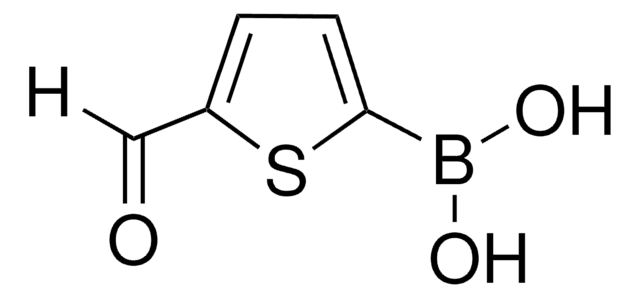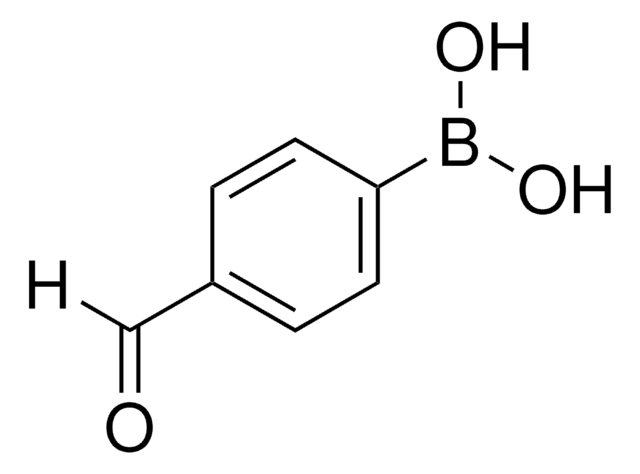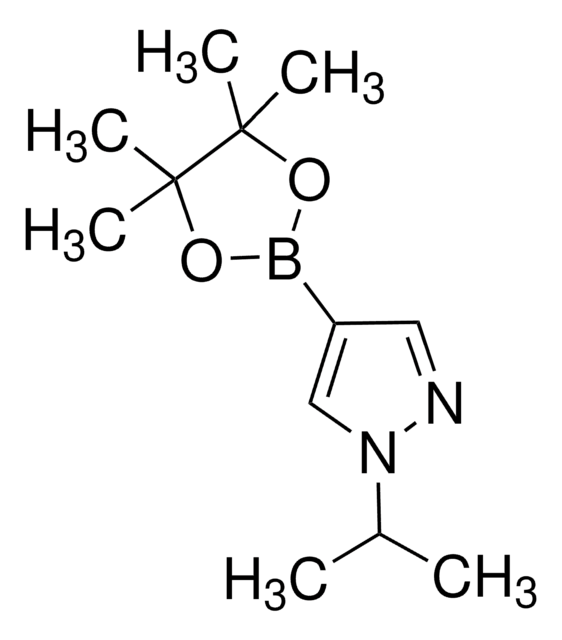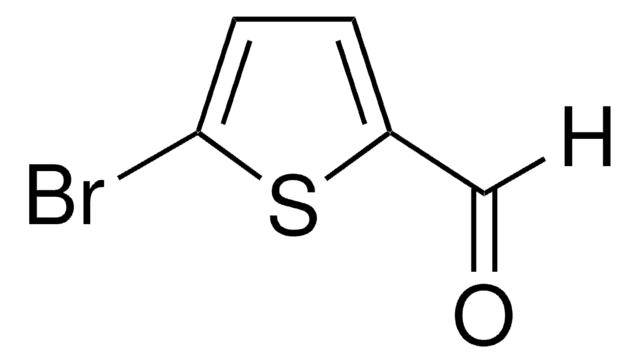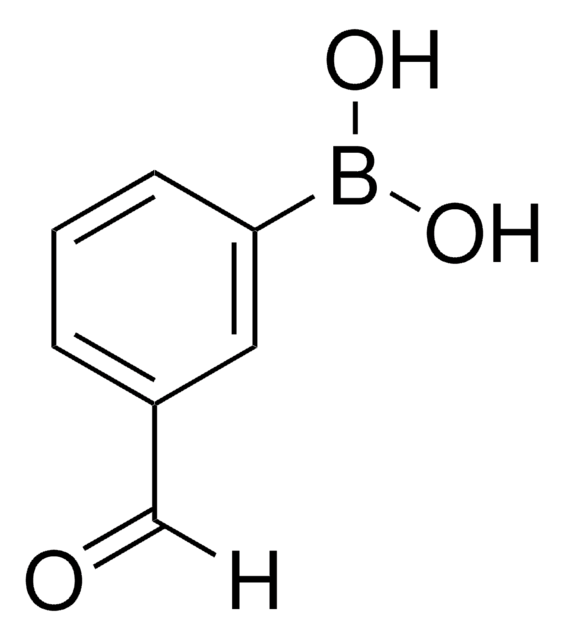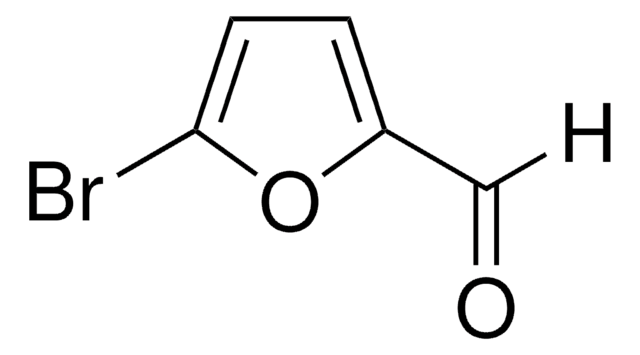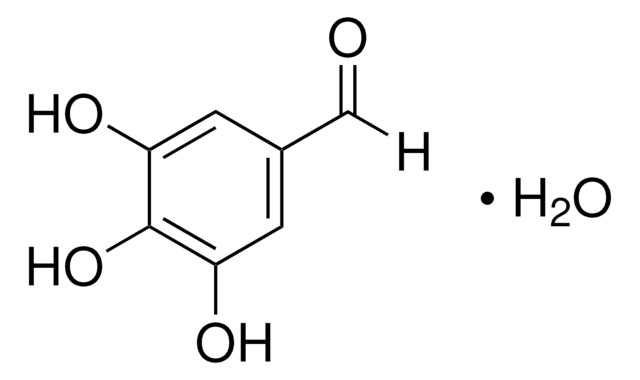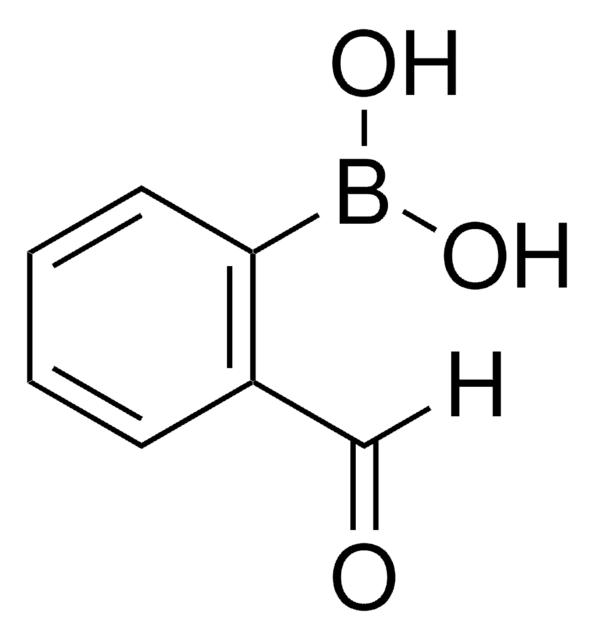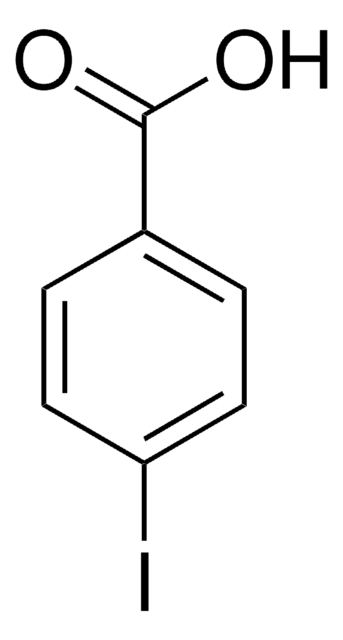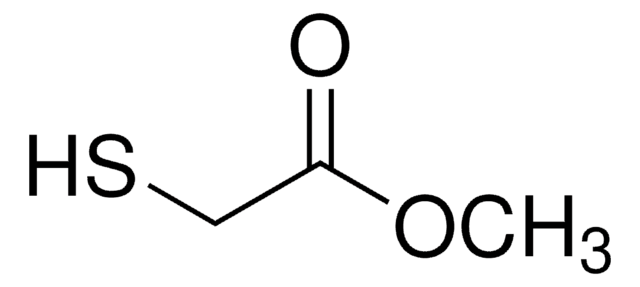Alle Fotos(3)
Wichtige Dokumente
512346
5-Formylfuran-2-boronsäure
≥95%
Synonym(e):
5-Formyl-2-furanboronic acid
Anmeldenzur Ansicht organisationsspezifischer und vertraglich vereinbarter Preise
Alle Fotos(3)
About This Item
Empirische Formel (Hill-System):
C5H5BO4
CAS-Nummer:
Molekulargewicht:
139.90
MDL-Nummer:
UNSPSC-Code:
12352103
PubChem Substanz-ID:
NACRES:
NA.22
Empfohlene Produkte
Qualitätsniveau
Assay
≥95%
Form
solid
mp (Schmelzpunkt)
136 °C (dec.) (lit.)
Funktionelle Gruppe
aldehyde
SMILES String
OB(O)c1ccc(C=O)o1
InChI
1S/C5H5BO4/c7-3-4-1-2-5(10-4)6(8)9/h1-3,8-9H
InChIKey
JUWYQISLQJRRNT-UHFFFAOYSA-N
Anwendung
Reactant involved in Suzuki coupling for synthesis of stable dye-senstitized solar cells
Reactant involved in synthesis of biologically active molecules including:
Reactant involved in synthesis of biologically active molecules including:
- Heteroarylation for the synthesis of HIF-1 inhibitors
- Disalicylic acid-furanyl derivatives to inhibit ephrin binding
- HIV-1 integrase inhibitors
- Epidermal growth factor receptor inhibitors
Sonstige Hinweise
Contains varying amounts of anhydride
Signalwort
Danger
H-Sätze
Gefahreneinstufungen
Skin Corr. 1B
Lagerklassenschlüssel
8A - Combustible corrosive hazardous materials
WGK
WGK 3
Flammpunkt (°F)
Not applicable
Flammpunkt (°C)
Not applicable
Persönliche Schutzausrüstung
Eyeshields, Faceshields, Gloves, type P3 (EN 143) respirator cartridges
Hier finden Sie alle aktuellen Versionen:
Besitzen Sie dieses Produkt bereits?
In der Dokumentenbibliothek finden Sie die Dokumentation zu den Produkten, die Sie kürzlich erworben haben.
Kunden haben sich ebenfalls angesehen
Qi Xia et al.
ACS applied materials & interfaces, 10(20), 17081-17088 (2018-05-03)
Effective long-term monitoring of tumor growth is significant for the evaluation of cancer therapy. Aggregation-induced emission-active near-infrared (NIR) fluorescent organic nanoparticles (TPFE-Rho dots) are designed and synthesized for long-term in vitro cell tracking and in vivo monitoring of tumor growth.
Marika Tiberi et al.
Antimicrobial agents and chemotherapy, 58(6), 3043-3052 (2014-03-13)
We report here the synthesis of 2-aminothiazolones along with their biological properties as novel anti-HIV agents. Such compounds have proven to act through the inhibition of the gp120-CD4 protein-protein interaction that occurs at the very early stage of the HIV-1
Unser Team von Wissenschaftlern verfügt über Erfahrung in allen Forschungsbereichen einschließlich Life Science, Materialwissenschaften, chemischer Synthese, Chromatographie, Analytik und vielen mehr..
Setzen Sie sich mit dem technischen Dienst in Verbindung.